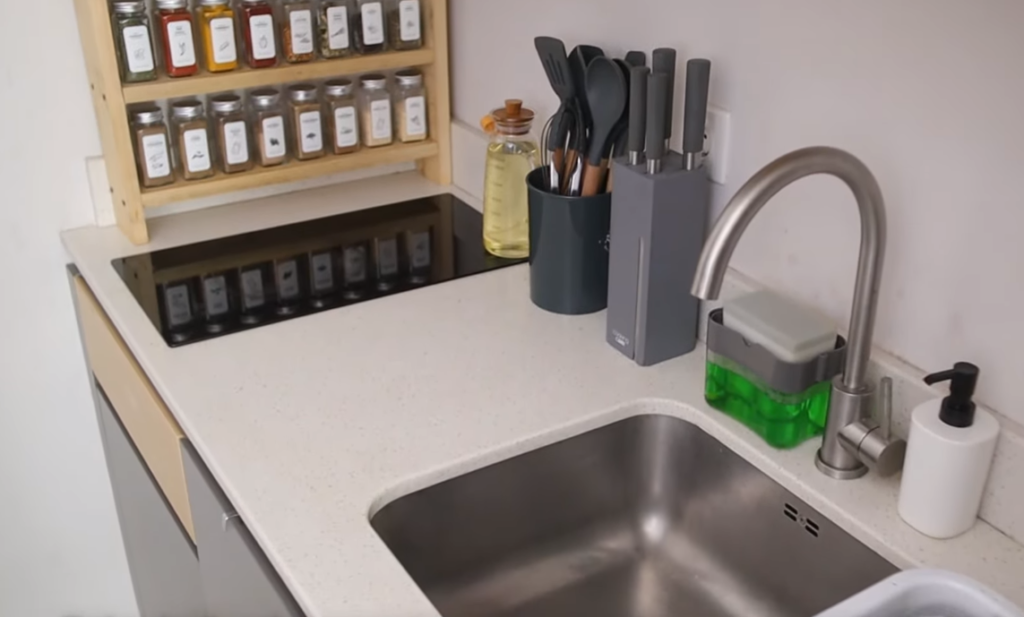Forget the idea that minimalist kitchens are boring or lack the tools to make delicious meals!
A minimalist kitchen is all about focusing on what matters: tools that work, less clutter, and more joy in the cooking process.
Whether you’re downsizing or dreaming of a refresh, this minimalist kitchen essentials guide is your roadmap to a kitchen that makes cooking a breeze.
The Principles of a Minimalist Kitchen
- Function First: If a tool doesn’t get regular use, it probably doesn’t belong in your kitchen. Letting go of rarely used items frees up space and mental energy.
- Quality Counts: It’s better to have a few well-made tools that you love using (and will last for years) than a bunch of cheap stuff that breaks easily.
- It’s Okay to be Pretty: Minimalism doesn’t mean your kitchen has to be cold and stark. A few plants, a favorite piece of art, or beautifully stored spices make your space feel like yours.
The Essential Minimalist Kitchen Tools List
Let’s talk about the must-haves, the tools you’ll reach for almost every time you cook. You might have a few ‘extras’ based on what you love to make, but this list is a rock-solid starting point.
1. Knives
- Your Kitchen Workhorses:
- Chef’s Knife: This is your go-to for everything from chopping veggies to slicing meat. Choose a good quality 8-inch blade – you’ll use this thing all the time!
- Paring Knife: Perfect for small jobs like peeling, mincing, and those tasks where a big knife feels clumsy.
- The “Nice to Have”:
- Bread Knife: If you often bake your own bread or buy unsliced loaves, this serrated knife will make your life easier (and your slices prettier!).
Care & Storage: Handwash your knives (dishwashers can be rough on them) and dry them right away. A magnetic strip is a great way to store them – safe, visible, and makes you look like a pro!
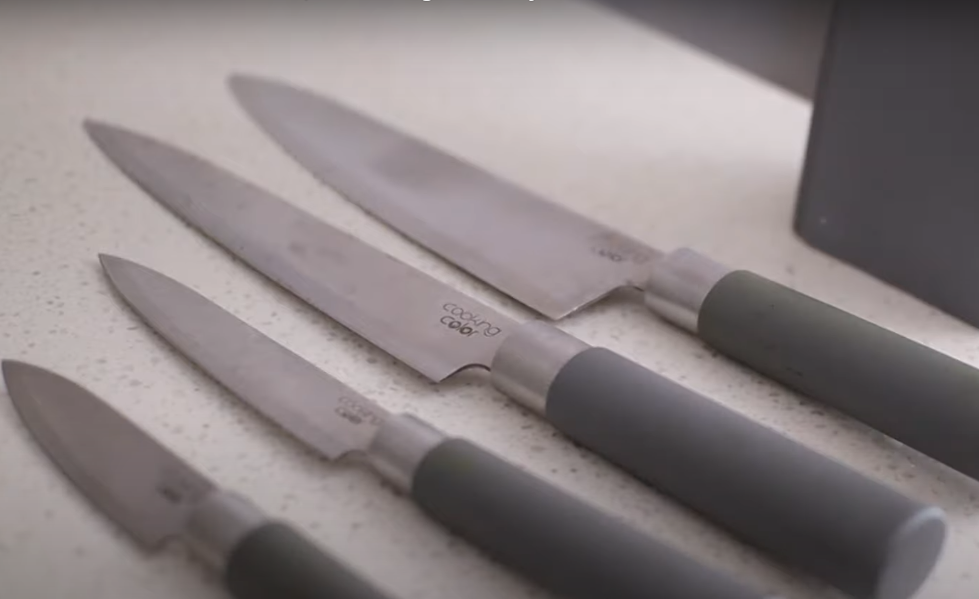
2. Pots & Pans
- A Versatile Trio:
- Large Pot: Think about the biggest thing you usually cook (pasta for the family, a batch of soup, etc.), and size accordingly. A 6-8 quart pot covers most bases.
- Skillet: Cast iron is amazing for its heat retention and durability, but stainless steel is also a good choice. Go with what feels right in your hand.
- Saucepan: For sauce making, heating up leftovers, or cooking smaller amounts of grains. A 2-3 quart size is usually plenty.
- Material Matters: Stainless steel is a good all-arounder, and cast iron lasts forever. Nonstick has its place for certain tasks (eggs!) but isn’t always necessary.
- The Magic of Lids: Often overlooked, but lids trap heat for faster cooking and make your pots more versatile for simmering dishes, steaming veggies, etc.

3. Cooking Utensils
Think about what you actually use when you make your favorite meals. Here’s the core set, with some optional additions:
- Must-Haves for Everyone:
- Silicone Spatula: Heatproof, good for scraping bowls AND stir-frying. Get two – one for savory, one for sweet.
- Wooden Spoon: Classic for a reason! Durable and gentle on your pots and pans.
- Large Mixing Spoon: For stirring big pots of soup, scooping portions, etc.
- Whisk: Essential for dressings, sauces, even whipping a bit of cream.
- Tongs: Like an extension of your hand for flipping food, grabbing pasta, and more.
- Upgrade Your Experience:
- Microplane: Finely grated parmesan? A touch of fresh ginger? This tool is a game-changer.
- Can Opener: Seems obvious, but a good quality one makes the task so much less frustrating!
- Vegetable Peeler: If you eat a lot of produce, a sharp peeler is worth it.
Pro Tip: Opt for heatproof materials – wood, stainless steel, silicone – they won’t melt if accidentally left leaning against a hot pot.
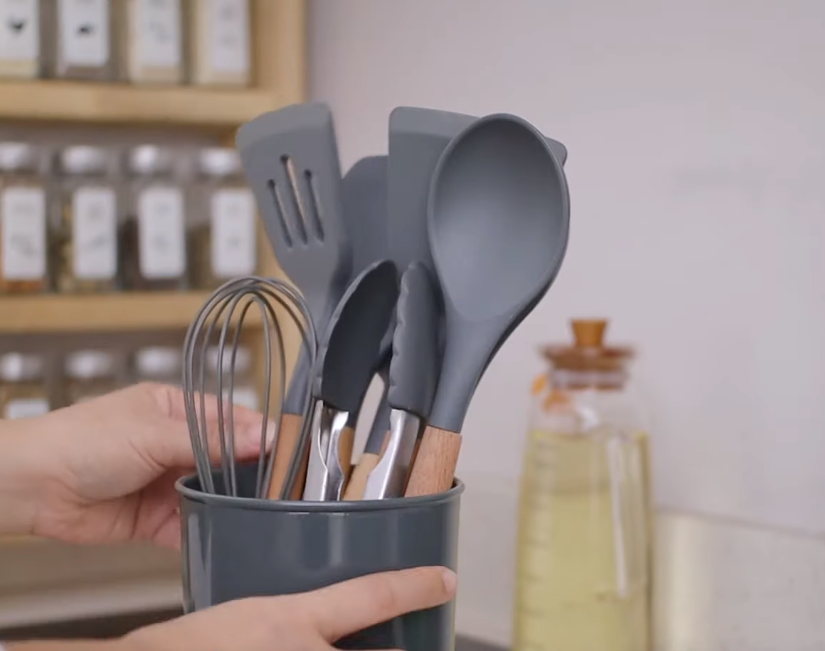
Let’s talk about those kitchen helpers that make baking a joy – or at least way easier!
4. Baking
If you don’t bake often, you may not need a ton of specialized gear. But if those cookies are calling your name, here’s what to have on hand:
- The Essentials:
- Baking Sheet: A sturdy half-sheet pan is your go-to for cookies, roasting veggies, and more.
- Mixing Bowls: A nested set covers all your needs, from mixing batter to whipping frosting.
- Measuring Cups & Spoons: Accuracy matters in baking!
- Going Beyond Basic:
- 9×13 Baking Pan: For brownies, bars, or even small casseroles.
- Loaf Pan: Banana bread cravings, anyone?
- Rubber Spatulas: Make scraping batter out of bowls a breeze.
- Cooling Rack: Crucial for cookies, cakes…anything you want to cool evenly.
Baking as Ritual: Whether you bake weekly or for special occasions, minimalist baking is about choosing favorite recipes and having the tools on hand to enjoy them. Pretty bowls and cake stands can become part of your kitchen’s aesthetic too!
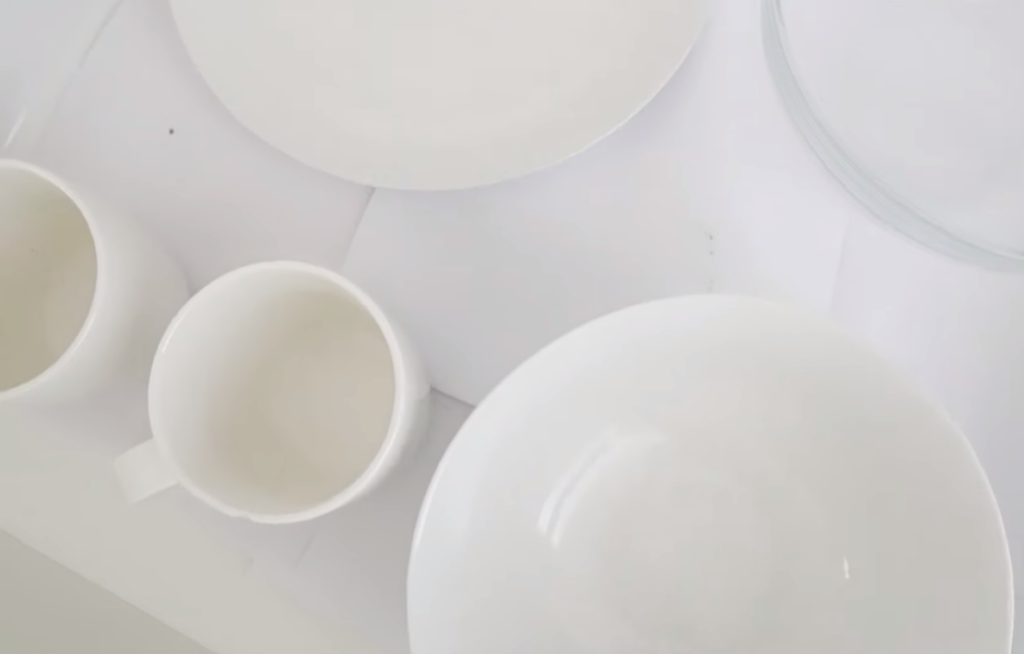
Essential Appliances for Minimalist Kitchen
This is where a minimalist kitchen really diverges from the “more is better” mindset. Ask yourself honestly how often you use each appliance, and if there are smarter alternatives.
- The Core Appliances
- Blender or Food Processor: These are great if you make a lot of smoothies, sauces, etc. But if used rarely, consider an immersion blender – it does many of the same tasks while taking up less space.
- Coffee Maker/Kettle: Only if you are a dedicated coffee or tea drinker, of course! Choose a model that aligns with your preferred method of brewing.
- To Keep or Not?
- Microwave: For some, a necessity, for others, just takes up counter space. Can you reheat food on the stove just as easily?
- Toaster: A toaster oven can do the job and bake small portions, toast nuts, etc. If you crave toast daily, a dedicated toaster might be right for you.
- Stand Mixer: Amazing if you are an avid baker! If not, a handheld mixer and a good whisk can usually get the job done.
- Countertop Considerations:
- Visually Pleasing: If an appliance is always out, choose one that blends with your design style.
- Storage Space: Can less-used items be tucked away? Prioritize what you use most for easy access.
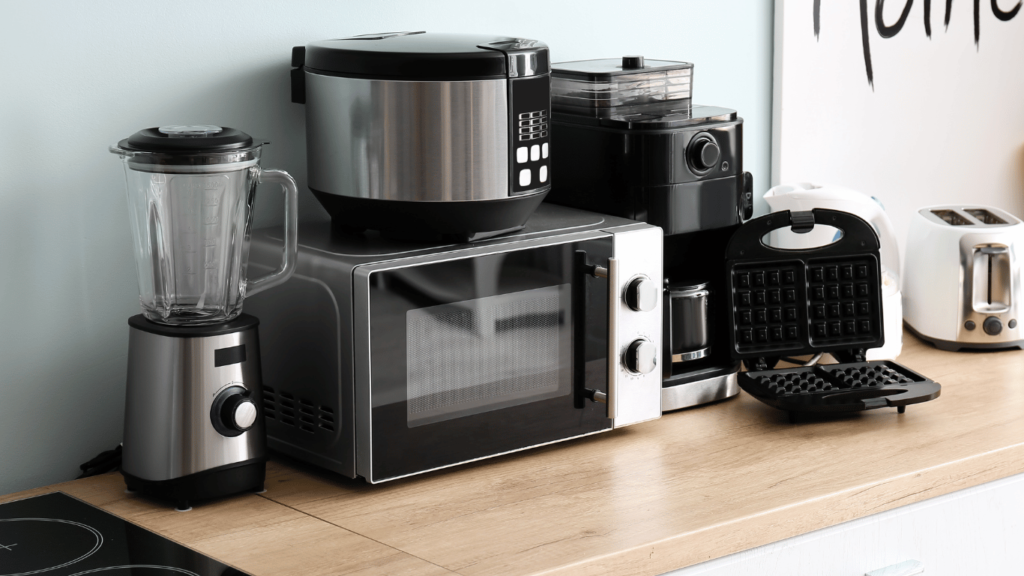
Pro Tip: Before buying a specialty appliance (waffle maker, bread machine), try “borrowing” a friend’s to see if you actually will use it enough to justify the space.
Decluttering With Intention
Getting rid of unused kitchen tools isn’t just about having less stuff, it’s about making cooking easier and more enjoyable. Letting go creates space for what you genuinely use, and lessens the mental clutter of trying to find what you need among items you never reach for. Here’s how to tackle the process:
- The “Haven’t Used it in a Year” Rule: A good starting point! If something hasn’t seen the light of day in the past 12 months, chances are it’s not essential. Exceptions can be made for truly seasonal items (think popsicle molds, that special pie plate reserved for Thanksgiving).
- Combatting Duplicates: Do you really need three whisks? Choose your absolute favorite, and let those extra tools find new homes where they’ll be appreciated.
- Don’t Keep the Broken: A spatula missing its head, a chipped mixing bowl…these don’t bring joy to your cooking process. If it’s not in good working order, it’s probably time to say goodbye.
- Letting Go of the “Just in Case”: We often hang on to those rarely-used items thinking “but what if someday I need to make X?” The reality is, you can likely borrow a friend’s tool, or find a simple workaround if that rare craving strikes. Don’t let those “just in case” items clutter your present-day cooking.
- Finding New Homes:
- Donate: Many organizations accept kitchen tools in good condition. Give your unloved gadgets a chance to spark joy for someone else!
- Gift to a Friend: That juicer gathering dust might be the perfect thing for your smoothie-loving bestie. Remember, minimalism isn’t about getting rid of things just for the sake of it.
- Sell: For high-quality items you truly don’t use, online marketplaces can help you recoup some cash while finding those tools a more appreciative home.
- The “Maybe” Box: If there are items you’re on the fence about, box them up and put them out of sight for a month. Did you even miss them? If not, it’s a safe bet you can let them go.
- The Joy of “Enough”: Minimalism in the kitchen is about paring down to the essentials, the tools that make cooking feel effortless instead of overwhelming. Celebrate that newfound ease and the mental space it creates for culinary creativity!
Storage and Organization That Spark Joy
A cluttered kitchen creates friction, making you less likely to want to cook. In a minimalist kitchen, smart storage solutions ensure your tools are easy to find and your space feels serene, fostering a sense of joy every time you step into it.
- Open Shelving: Done Right
- Curated Collection: It’s about showcasing your favorite, frequently used dishware, bowls, and mugs. Don’t feel pressured to display everything you own!
- Visual Balance: Mix functional items with a few decorative pieces. A favorite cookbook, a small plant, or a beautiful piece of pottery keep it from feeling utilitarian.
- Bonus Cleaning Tip: Open shelving encourages you to keep things tidy since it’s all on display!
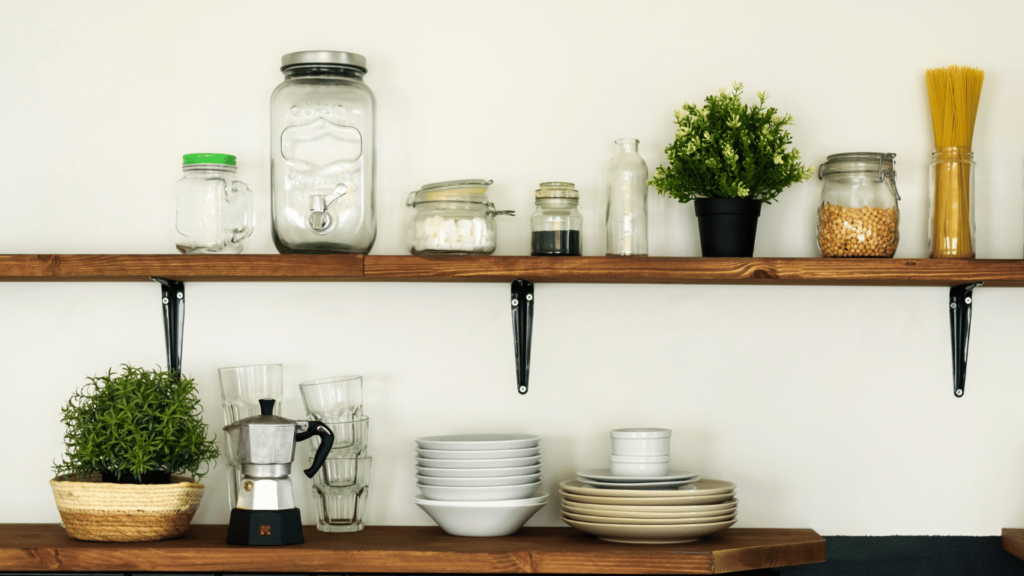
- Drawer Delights:
- Dividers are Your Friend: They prevent that frustrating jumble of utensils and tools. Simple bamboo dividers create instant organization.
- Grouping Like with Like: All your baking tools in one drawer, measuring cups and spoons in another… this creates an intuitive flow when grabbing what you need.
- Labels for Clarity: Especially helpful in shared homes, or if storing similar-looking ingredients in clear containers.
- The Under-the-Counter Opportunity: A few stackable bins help categorize things like extra baking bags, or cleaning wipes, making the most of this often-chaotic space.
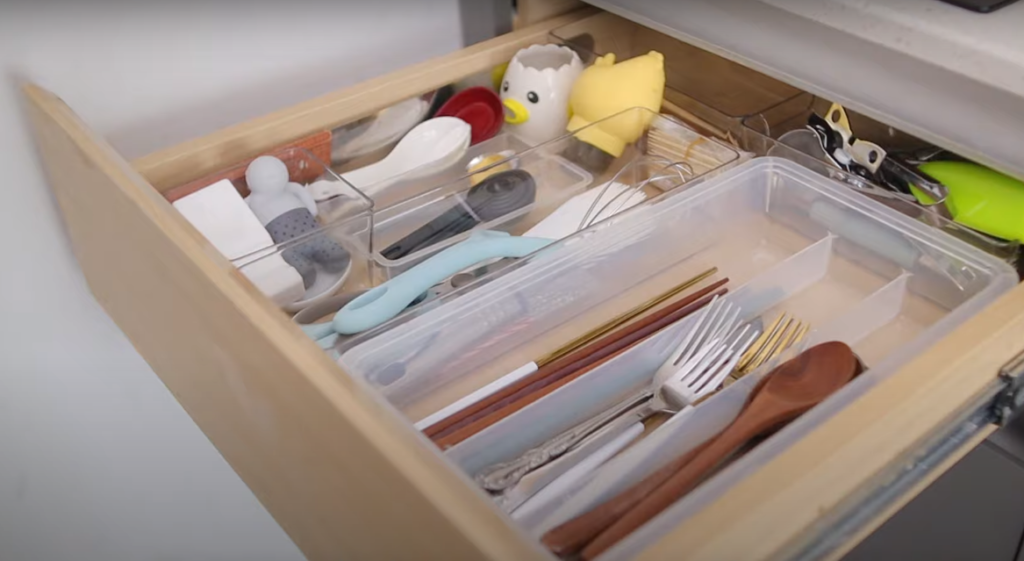
- Maximize Your Cabinets:
- Shelf Risers: These give you double the space in deep cabinets, perfect for stacking plates or mugs, and utilizing that vertical space.
- Lazy Susans: Great for corralling bottles and jars in awkward corner cabinets, so nothing gets lost in the back.
- Bins and Baskets: Essential for organizing those deep pantry shelves. Categorize snacks, baking supplies, or canned goods, making it easier to see what you have on hand.
- The Power of Pretty Storage:
- Clear Canisters: They let you easily see your dry goods, encouraging you to use up those ingredients before they expire. Choose ones that fit your aesthetic for a cohesive look.
- Ceramic or Stoneware: Utensil holders, spice jars, or even butter dishes instantly elevate the look of your kitchen when chosen intentionally.
- Woven Baskets: Add texture and warmth, and can be used on shelves to hold tea towels, less-frequently used tools, or even your collection of reusable produce bags.
- Beauty in the Everyday: Don’t underestimate the power of having matched dish towels, a pleasing dish drainer, or even a soap dispenser you love. These small touches become part of your kitchen’s overall calming atmosphere.
Remember: There’s no one-size-fits-all solution for kitchen storage. Embrace the process of trial and error – try a system, see how it feels, and tweak it until it flows effortlessly for your cooking habits. A well-organized minimalist kitchen truly makes cooking a joy!
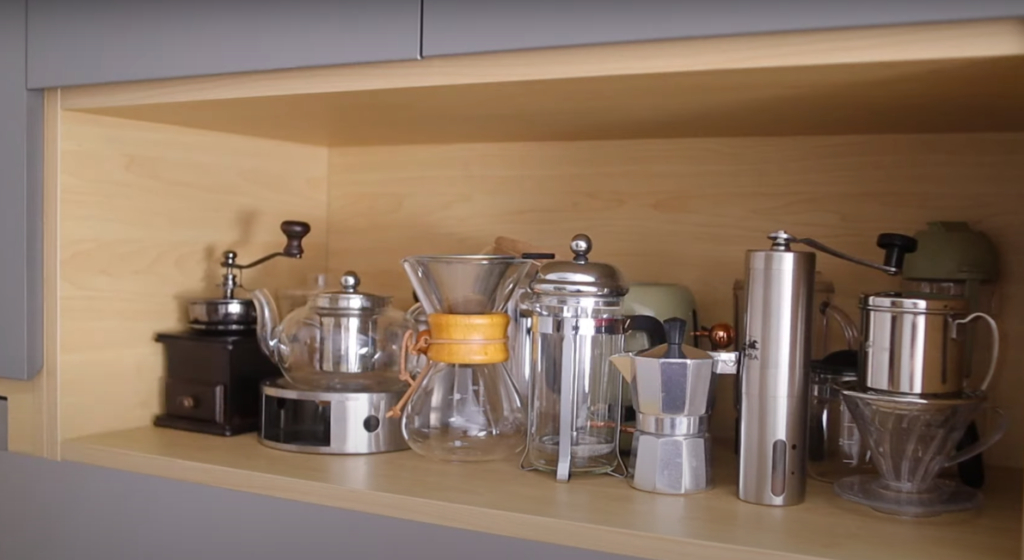
Let’s move on to the practical side of a minimalist kitchen: food prep!
Minimalist Food Prep for Streamlined Cooking
A minimalist kitchen isn’t just about sleek design; it’s about making your cooking life easier, more sustainable, and more creative. Smart food prep strategies are a cornerstone of this philosophy, allowing you to make the most of every ingredient and minimize the frantic “what’s for dinner?” moments.
- The Magic of Meal Planning:
- Reduces Food Waste: When you plan your meals for a few days or even the week, you’re far less likely to buy things you don’t need (and then forget about in the back of the fridge)
- Saves Money: You stick to a grocery list based on meals you know you’ll cook, avoiding impulsive purchases that might go unused. Bonus: Less food waste also saves money!
- Less Mental Load: That daily 5 pm scramble of “what do I make?” disappears because you already have a blueprint. This frees up mental space to actually enjoy cooking rather than dreading it.
- Encourages Creativity: Meal planning can spark unexpected combinations. “Okay, I have leftover rice, some veggies, and that rotisserie chicken…burrito bowls tonight!”
- Shopping With a Purpose:
- The Power of the List: It’s your guidepost to avoid wandering through the store and getting distracted by items you won’t actually use.
- Shop Your Kitchen First: Before even making your list, see what you have on hand. Challenge yourself to build at least a few meals around existing pantry staples and produce.
- Know Your Store: Is the bulk section your best friend for buying just what you need? Is the farmer’s market your weekend source for super fresh produce? Tailor your shopping habits to your minimalist goals.
- Embracing Batch Cooking:
- Stress-free Weeknights: Double a recipe of a favorite soup, a pot of beans, or even just roast a bunch of veggies to have ready throughout the week. This gives you a head start on meals.
- Freezer Friendly: Many dishes (chili, lasagna, even muffins) freeze well. Batch cooking gives you ready-made meals for nights when you lack cooking inspiration.
- Repurpose Like a Pro: Leftover taco filling can be scrambled into eggs the next morning. Shredded chicken becomes salad topping. Those roasted veggies? They go into a pasta sauce, on top of toast… the possibilities are endless!
- Creative Leftovers:
- “Cleaning Out the Fridge” meals: Embrace those random bits and bobs as a challenge. Stir-fries, fried rice dishes, and pasta are all amazing at utilizing odds and ends.
- Reimagine, Don’t Just Reheat: Leftover mashed potatoes can turn into pancakes, wilted greens can be blended into pesto. Think transformation for those less-than-exciting leftovers.
- Compost If Possible: It keeps food scraps out of landfills, and reduces your “trash” output. Plus, if you garden, you get free fertilizer down the road – a true win-win for a minimalist lifestyle.
Additional Resources:
- A beginner’s guide to meal planning.
- Batch cooking 101.
- Recycling food and other organic waste into compost.
Pro Tip: Family meal planning sessions are a great way to get buy-in, especially from kids! Let everyone browse cookbooks for ideas and pick a dish they’re excited about. They’re more invested in what’s ultimately made, and get practice with an important life skill at the same time.
Let’s wrap things up with how your kitchen’s design itself helps create a sense of calm and enjoyment!
The Minimalist Kitchen Setup
The way your kitchen is arranged has a huge impact on your cooking experience. Applying a few minimalist design principles creates a space that feels open, inviting, and works with you, not against you.
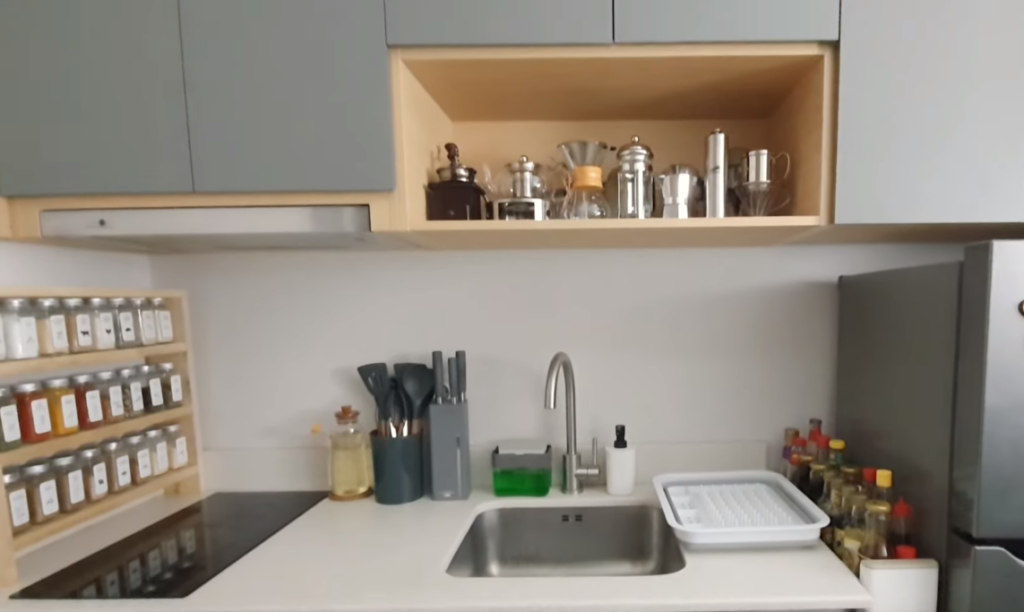
- The Beauty of the Work Triangle: This classic concept posits that your sink, stove, and refrigerator should form an imaginary triangle. This efficient layout minimizes wasted steps and makes multitasking smoother. Even in a small kitchen, try to have these zones within easy reach.

- Maximize Your Workspace:
- The Tyranny of Clutter: Daily-use items earn their place on the counter. But that air fryer you pull out monthly? Find it a cabinet home. This frees up the most valuable real estate in your kitchen.
- Go Vertical: Wall-mounted spice racks, magnetic organizers for knives, even hanging pots and pans make the most of the space above your counters.
- Find Unused Corners: Add hooks to the side of cabinets, or use a slim rolling cart that tucks into those awkward, seemingly unusable spaces.
- The Power of Light: A well-lit kitchen is a safer, and more enjoyable kitchen!
- Task Zones: Pendant lights or under-cabinet LEDs above prep areas give you focused light right where you need it while chopping or reading recipes.
- The Mood Shifter: Dimmable overhead lights and softer lamps take the edge off and give your kitchen a more intimate, relaxed feel when you’re not actively cooking.
- Embrace the Sun: Natural light is an instant mood booster! If you have kitchen windows, maximize that light by keeping blinds open and surfaces clear.
- Color Creates Feeling:
- Neutral Foundations: Soft whites, warm grays, or natural wood tones create a sense of spaciousness that works beautifully in a minimalist kitchen.
- Nature’s Touch: A few plants, a bowl of colorful citrus, or even an herb garden bring just a touch of the outside world in, creating warmth and grounding energy.
- Express Yourself: A patterned tea towel, a framed art print, or a curated collection of mugs in your favorite color bring a touch of “you” into the space, keeping it from feeling too sterile.
- The Joy of Hidden Functionality:
- Out-of-Sight Trash: An under-counter bin instantly removes visual clutter and makes the whole kitchen feel more polished.
- Appliance “Garage”: If space allows, create a cabinet dedicated to those less-used appliances. That pristine countertop makes a beautiful minimalist statement.
- Pantry Perfection: Invest in drawer organizers, shelf risers, and clear bins to create a pantry that makes it easy to see what you have…and motivates you to actually use it!
- Observe & Optimize: Pay attention to where you find yourself stumbling. Do you trip over the same rug? Is your favorite pan buried in an awkward spot? Minimalism is as much about tweaking your space over time as it is the initial setup.
Final Thoughts!
The beauty of a minimalist kitchen isn’t just about having less, it’s about having exactly what fosters a sense of peace and enjoyment while you create meals. As you embark on this journey, remember these takeaways:
- Benefits Beyond the Aesthetic: A minimalist kitchen saves time, reduces food waste, simplifies the mental load of meal planning, and ultimately cultivates a more intentional, mindful relationship with what we create (and consume).
- Embrace the Process: Finding what works best for you takes time. Don’t be afraid to try different storage solutions, declutter in stages, and tweak your kitchen layout. It’s part of the fun!
- Focus on the Feeling: Does your kitchen feel heavy and cluttered, or does it inspire creativity and a sense of calm? Let this be your guidepost for deciding what stays and what goes.
- A Living Space: Your kitchen needs will evolve. Maybe you start baking more and acquire a few specialized tools, or you find yourself cooking simpler meals and downsizing some equipment. This fluidity is perfectly fine within the minimalist framework.
We want to hear from you! Share your favorite minimalist kitchen tip, or your biggest struggle when trying to streamline your cooking space.
Let’s learn from each other and continue creating kitchens that bring us joy!
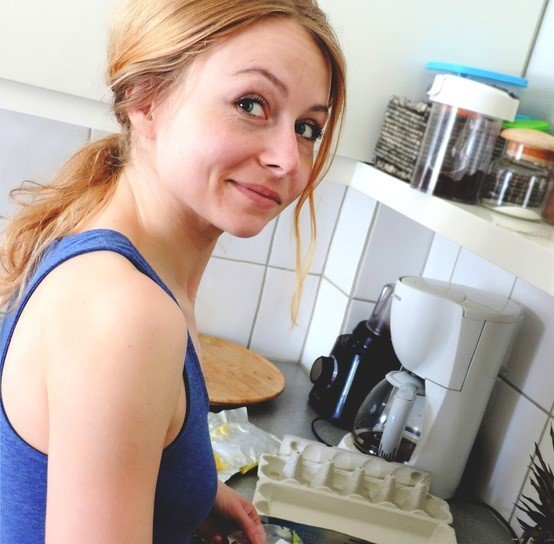
Editorial Director at The Easy Kitchen, she combines her extensive experience in the food and drink industry with a passion for kitchen innovation. With a background in kitchen management, recipe development, and product testing, Della offers readers a wealth of knowledge on cooking techniques, kitchen organization, and the latest culinary gadgets. Her articles aim to inspire cooks of all levels to explore new flavors and streamline their cooking process. When she’s not leading the editorial team or experimenting with new recipes, Della enjoys sharing her insights on creating efficient and enjoyable kitchen spaces.

